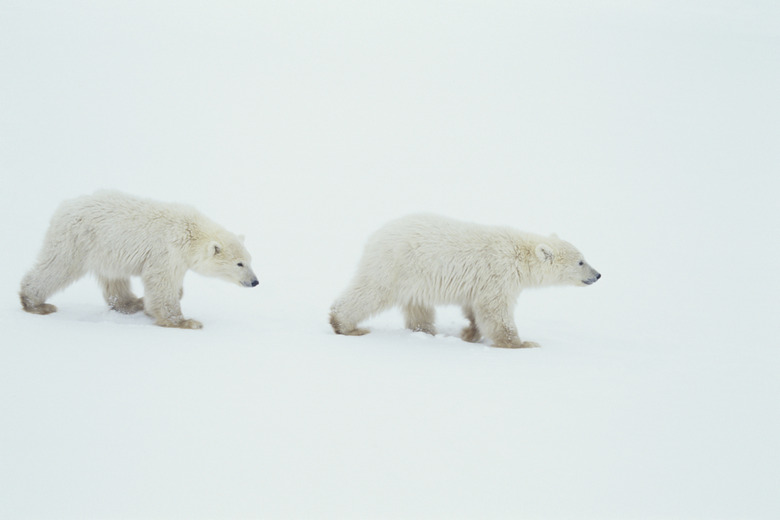Natural Resources In Northern Polar Regions
The term "natural resources" refers to goods found in nature that are often utilized by humans. Natural resources span a diverse spectrum, ranging from petroleum to water to gold to animals. Although the northern polar regions may appear too rugged and frozen to provide any natural resources, they in fact offer a surprising array of them, many of which have yet to be mapped and exploited by humans.
Fossil Fuels
Fossil Fuels
Perhaps the most potentially exploitable natural resources in the northern polar regions consist of fossil fuels — namely, oil and natural gas. Geologists estimate that the Arctic houses approximately 13 percent of the world's undiscovered petroleum reserves, plus about 30 percent of its undiscovered natural gas reserves. However, the remoteness and harsh climate of the Arctic present challenges to extracting and transporting these resources, and with these challenges come added financial burdens. At the time of publication, much of the fossil fuel resources in the northern polar regions remain underground, untouched by mankind. But there are exceptions; for instance, in the last quarter of the 20th century, companies began exporting oil from Alaska's famed North Slope.
Mineral Resources
Mineral Resources
Minerals are another highly valuable natural resource in northern polar areas. Uranium, tungsten, nickel, copper, gold and diamonds are among them. These mineral resources remain largely untouched, for the same reasons as the Arctic's fossil fuel resources. Yet some mining operations have successfully managed to extract minerals from the ground at a profit. For instance, gold is mined in the polar regions of Canada and some other countries, though fluctuating market prices coupled with geographical challenges make the continued feasibility of these mining projects questionable.
Biological Resources
Biological Resources
Despite its cold barrenness, the Arctic is home to a bountiful array of natural biological resources. A vast wilderness, northern polar regions feature copious supplies of freshwater, although much of it is locked up in ice. Large marine mammals, such as whales and seals, inhabit nearby oceans, as do fish species such as salmon and cod, supporting lucrative commercial fisheries. Birds from throughout the world flock to northern polar regions in the summertime to breed, and large animals such as reindeer, caribou and polar bears migrate across the landscape, providing important food resources for indigenous peoples.
Considerations and Challenges
Considerations and Challenges
Along with these resources come a vexing set of problems and questions. Not only do remoteness and environmental obstacles impede human access to the natural resources of the northern polar regions, but so do territorial disputes. Eight nations, the United States and Russia among them, lay claim to land areas north of the Arctic Circle, which include exclusive rights to undersea natural resources up to 322 kilometers (200 miles) beyond their borders. Many such locations overlap, which could cause border disputes if large-scale operations involving the extraction of natural resources were to be undertaken. A warming global climate may hasten this prospect, as climbing temperatures spur the melting of ice, opening up new transportation routes and opportunities for development.
Cite This Article
MLA
Harris, Amy. "Natural Resources In Northern Polar Regions" sciencing.com, https://www.sciencing.com/natural-resources-northern-polar-regions-22884/. 24 April 2017.
APA
Harris, Amy. (2017, April 24). Natural Resources In Northern Polar Regions. sciencing.com. Retrieved from https://www.sciencing.com/natural-resources-northern-polar-regions-22884/
Chicago
Harris, Amy. Natural Resources In Northern Polar Regions last modified March 24, 2022. https://www.sciencing.com/natural-resources-northern-polar-regions-22884/
